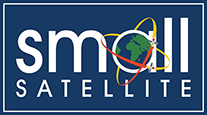Session
Session V: Propulsion-Enterprise
Location
Salt Palace Convention Center, Salt Lake City, UT
Abstract
Water has emerged as a promising propellant for small satellite propulsion systems due to its inherent advantages in safety, affordability, and ease of handling. Traditional chemical propellants such as hydrazine pose significant safety risks due to their toxicity and explosiveness, while electric propulsion systems often rely on high-pressure gases like xenon and krypton, which present logistical and supply chain challenges. Although water exhibits lower propulsive performance, particularly in terms of specific impulse, its practical benefits have gained attention with the rise of CubeSats and nanosatellites, where mission requirements prioritize simplicity and safety over maximum efficiency. Various water-based propulsion technologies have been proposed, including pulsed plasma thrusters (PPTs), resistojet thrusters, and electrolysis thrusters. These systems leverage water’s properties to enable safer and more accessible propulsion solutions. In particular, gridded ion thrusters using microwave-discharge plasma have been developed to mitigate electrode oxidation and eliminate the need for vulnerable hollow cathodes. Despite achieving a specific impulse of approximately 500 seconds, these systems still fall short of the performance offered by iodine-based ion thrusters and indium-based Field Emission Electric Propulsion (FEEP) systems. Recent advancements have led to the development of a compact gridded ion thruster module operating with microwave discharge. The system achieved 350 μN of thrust, 2000 seconds of specific impulse, and 7000 Ns of total impulse at 60 W power consumption, all within a 1U+ form factor. Key improvements include enhanced microwave power efficiency via F-class amplification, long-lifetime solid cathodes, and optimized water storage. This paper presents the underlying principles, system architecture, and critical technologies of the thruster, followed by results from ground-based performance and environmental testing.
Document Type
Event
Performance Evaluation of 1 U+ Module of Water Ion Thruster With 7000 Ns of Total Impulse
Salt Palace Convention Center, Salt Lake City, UT
Water has emerged as a promising propellant for small satellite propulsion systems due to its inherent advantages in safety, affordability, and ease of handling. Traditional chemical propellants such as hydrazine pose significant safety risks due to their toxicity and explosiveness, while electric propulsion systems often rely on high-pressure gases like xenon and krypton, which present logistical and supply chain challenges. Although water exhibits lower propulsive performance, particularly in terms of specific impulse, its practical benefits have gained attention with the rise of CubeSats and nanosatellites, where mission requirements prioritize simplicity and safety over maximum efficiency. Various water-based propulsion technologies have been proposed, including pulsed plasma thrusters (PPTs), resistojet thrusters, and electrolysis thrusters. These systems leverage water’s properties to enable safer and more accessible propulsion solutions. In particular, gridded ion thrusters using microwave-discharge plasma have been developed to mitigate electrode oxidation and eliminate the need for vulnerable hollow cathodes. Despite achieving a specific impulse of approximately 500 seconds, these systems still fall short of the performance offered by iodine-based ion thrusters and indium-based Field Emission Electric Propulsion (FEEP) systems. Recent advancements have led to the development of a compact gridded ion thruster module operating with microwave discharge. The system achieved 350 μN of thrust, 2000 seconds of specific impulse, and 7000 Ns of total impulse at 60 W power consumption, all within a 1U+ form factor. Key improvements include enhanced microwave power efficiency via F-class amplification, long-lifetime solid cathodes, and optimized water storage. This paper presents the underlying principles, system architecture, and critical technologies of the thruster, followed by results from ground-based performance and environmental testing.


